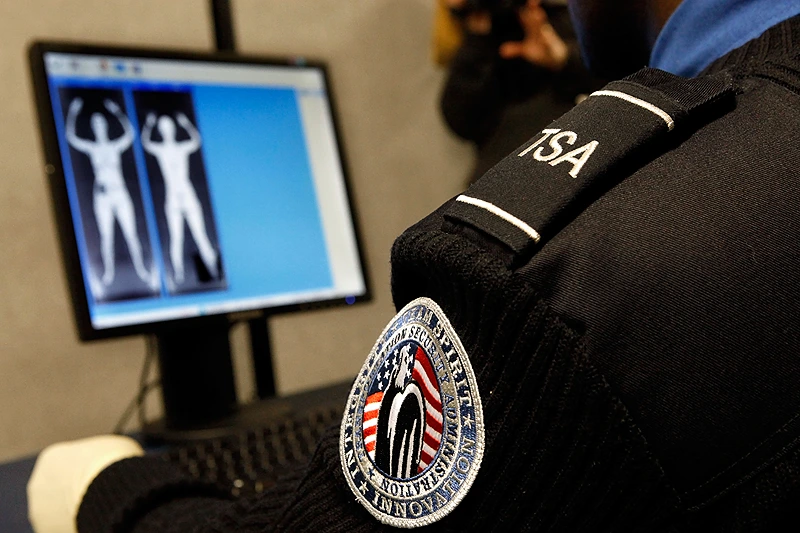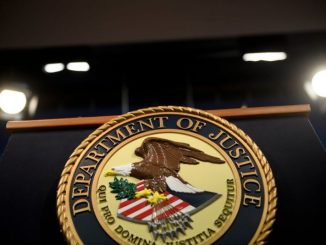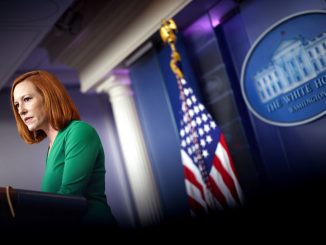

OAN Brooke Mallory
UPDATED 11:56 AM – Monday, May 15, 2023
Picture this. A traveler approaches a security checkpoint at the airport, inserts their identification card into a slot, and faces a camera on a small screen. Without having to present their identity to the TSA agent, the screen then reads “Photo Complete,” and the person passes through.
Advertisement
The Transportation Security Administration is now evaluating the use of facial recognition technology at some airports around the U.S. as part of a recent pilot project.
“What we are trying to do with this is aid the officers to actually determine that you are who you say who you are,” said Jason Lim, an identity capabilities manager, during a demonstration of the technology at Baltimore-Washington International Thurgood Marshall Airport.
The initiative comes at a time when various forms of technology are being used more frequently to improve security and simplify processes. Although the TSA claims that the trial program is accurate and optional, detractors have voiced worries about bias in facial recognition technology and potential consequences for travelers who choose to opt out.
There are currently 16 airports using the technology. The Reagan National Airport near Washington, D.C., as well as airports in Atlanta, Boston, Dallas, Denver, Detroit, Las Vegas, Baltimore, Los Angeles, Miami, Orlando, Phoenix, Salt Lake City, San Jose, Gulfport-Biloxi, and Jackson, Mississippi.
Travelers either place their passport photo against a card reader or insert their driver’s license into a slot that reads the card. People stare into the camera, which captures their image and compares it to their ID on a screen roughly the size of an iPad. The technology verifies that the individuals at the airport match the identification they are presenting and that the I.D. card is valid. The screening is then approved by a TSA agent who is still present at the entryway.
Travelers are alerted by a sign telling them that their photo will be taken as part of the pilot program and that they can choose not to participate if they so choose. In order for people to learn more about the facial recognition process, it also provides a QR code that gives travelers more information.
Since its utilization, the pilot has drawn the attention of certain elected figures and privacy activists. Five senators, including one Independent who is a member of the Democratic caucus, demanded that the TSA immediately halt the program in a letter sent to the agency in February.
“Increasing biometric surveillance of Americans by the government represents a risk to civil liberties and privacy rights,” the letter read.
Concerns regarding how this data is gathered, who has access to it, and what happens if it is compromised have been raised by privacy advocates as various biometric technologies like face IDs, retina scans, and fingerprint matches have proliferated in both the private sector and the federal government.
There are additional concerns regarding bias in the programed algorithms of facial recognition technology, according to Meg Foster, a justice fellow at Georgetown University’s Center on Privacy and Technology. Many critics have mentioned that outside hackers could possibly find a way to access these government systems and use them for nefarious purposes.
Foster voiced apprehension regarding the TSA pilot program because, despite the agency’s assurances that no biometric data is being collected, that policy could change in the future and without notice. She argued that even though people would still have the choice to decline, it was not intended to add more pressure on already-stressed travelers who might be worried about missing their flight.
“They might be concerned that if they object to face recognition, that they’re going to be under further suspicion,” Foster said.
While it is now up to the choice of travelers, Jeramie Scott of the Electronic Privacy Information Center also warned that the voluntary nature of the technology might turn mandatory in the near future. He mentioned that David Pekoske, the chief of the TSA, had stated during a speech in April that biometrics would someday be necessary since they are more effective and efficient, though he did not provide a specific timeframe.
According to Scott, the TSA should not be employing the technology. He preferred, at the very least, an external assessment to confirm that the technology is not disproportionately impacting specific groups and that the photographs are deleted after their application.
The objective of the trial, according to the TSA, is to increase identification verification accuracy without slowing down how quickly travelers are able to pass through checkpoints. This is a crucial concern for an organization that sees around 2.4 million passengers every day. According to the agency, early results are looking hopeful and have not revealed any discernible differences in the algorithm’s capacity to identify passengers depending on factors like age, gender, race, and ethnicity.
According to Lim, the photos and IDs are eventually removed, and the images are not being put into any sort of database. However, in rare instances, data is gathered for an assessment and sent to the Department of Homeland Security’s Science and Technology Directorate. According to TSA, the data sent to the DHS is removed after 24 months.
The camera only activates when a person inserts their ID card, according to Lim. As a result, it is not taking pictures of travelers at the airport at random. He claims that this gives passengers the option of using it or not. He also added that studies have shown that although some algorithms do perform worse with particular demographics, they also demonstrate that higher-quality algorithms, such as the one the agency employs, are far more accurate. He insisted that employing the best cameras available plays a role in its success.
“We take these privacy concerns and civil rights concerns very seriously, because we touch so many people every day,” Lim maintained.
According to retired TSA employee Keith Jeffries, the COVID-19 era significantly sped up the adoption of various forms of this “touchless” technology, which avoids the need for a passenger to hand over a document to an agent.
In many ways, the use of biometrics is already deeply ingrained in society through the use of privately held technologies, despite the privacy concerns and lack of trust many people have when it comes to providing biometric data to the federal government, he added.
“Technology is here to stay,” Jeffries maintained.
Stay informed! Receive breaking news blasts directly to your inbox for free. Subscribe here. https://www.oann.com/alerts






Be the first to comment